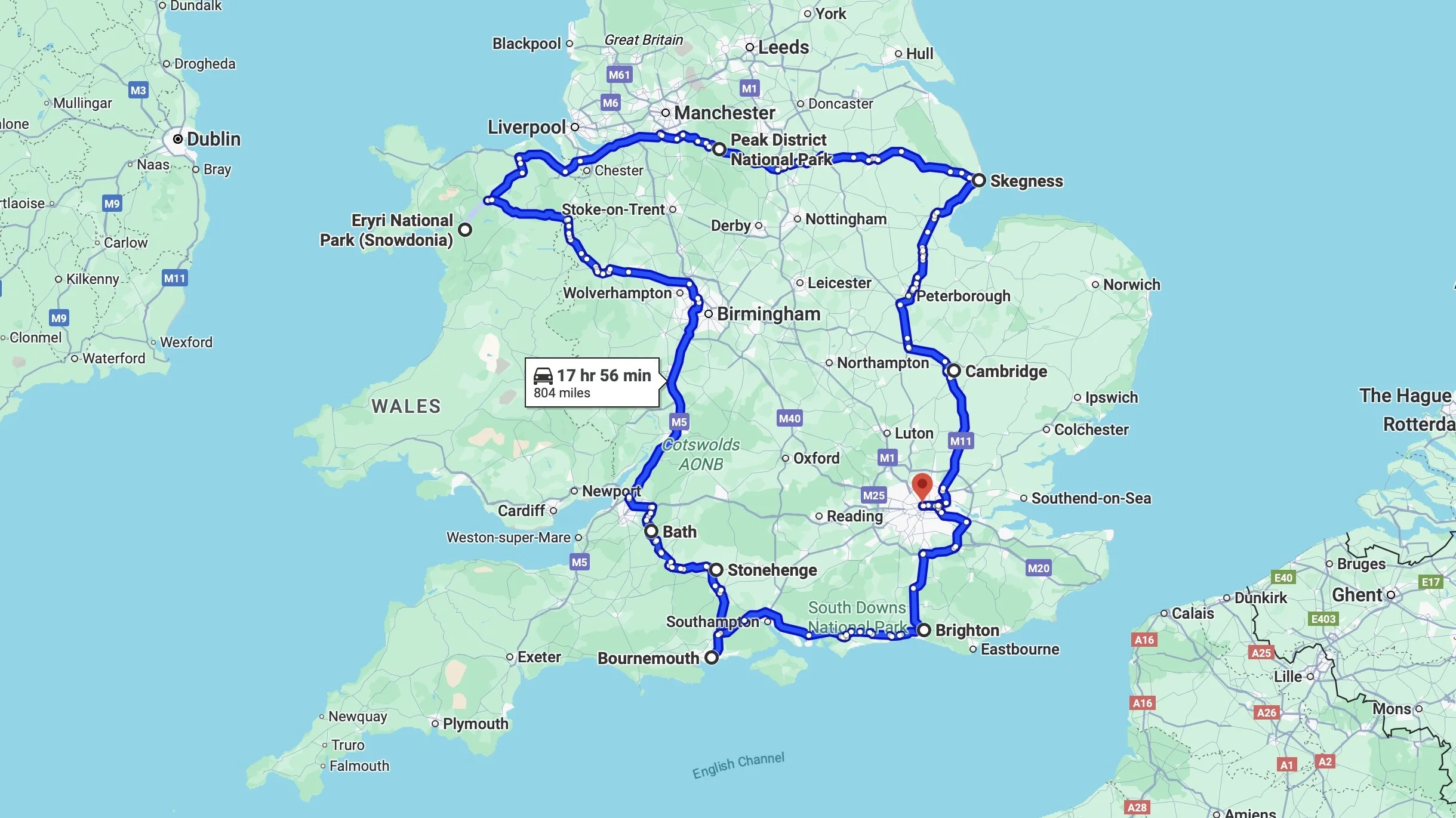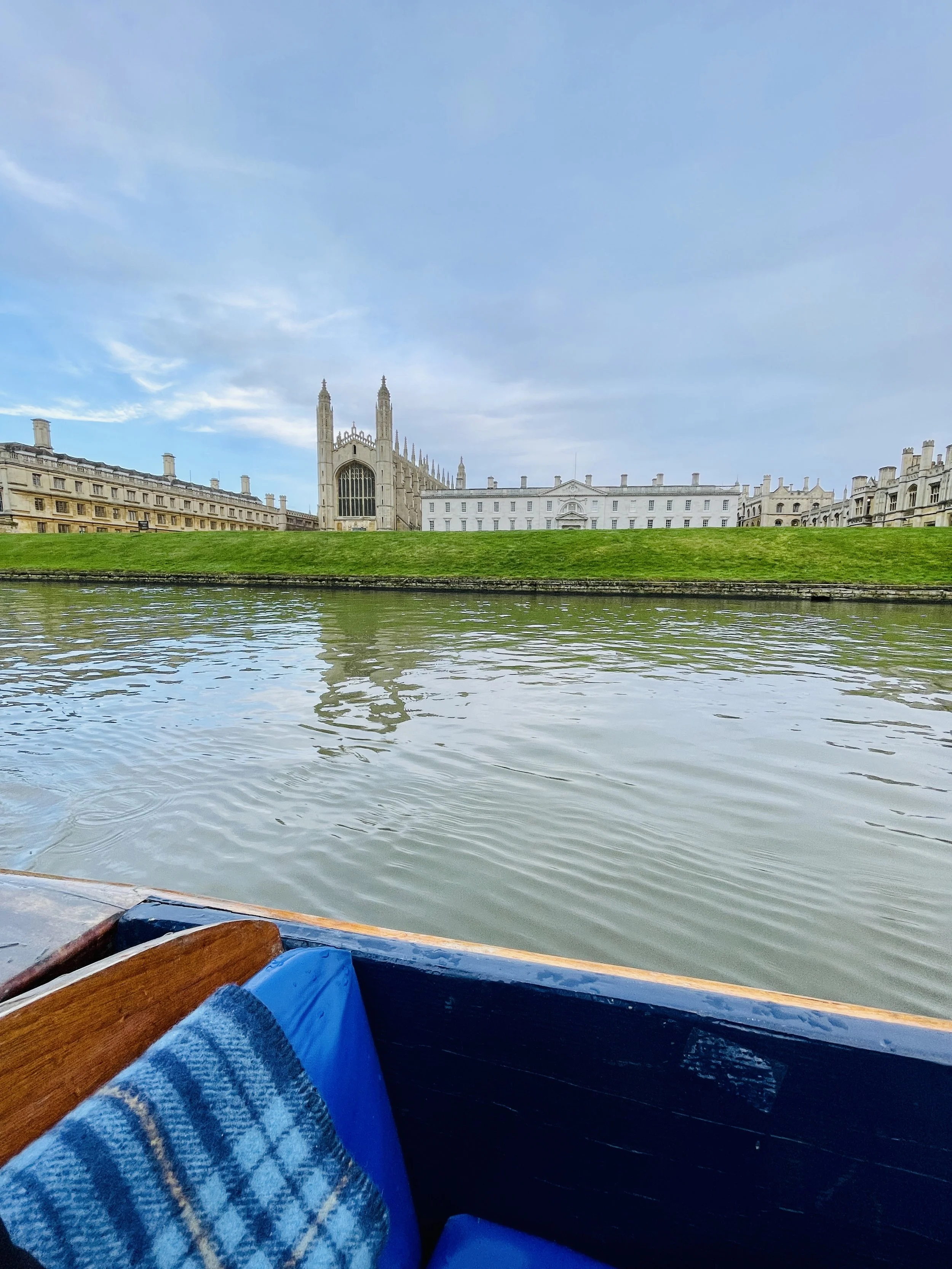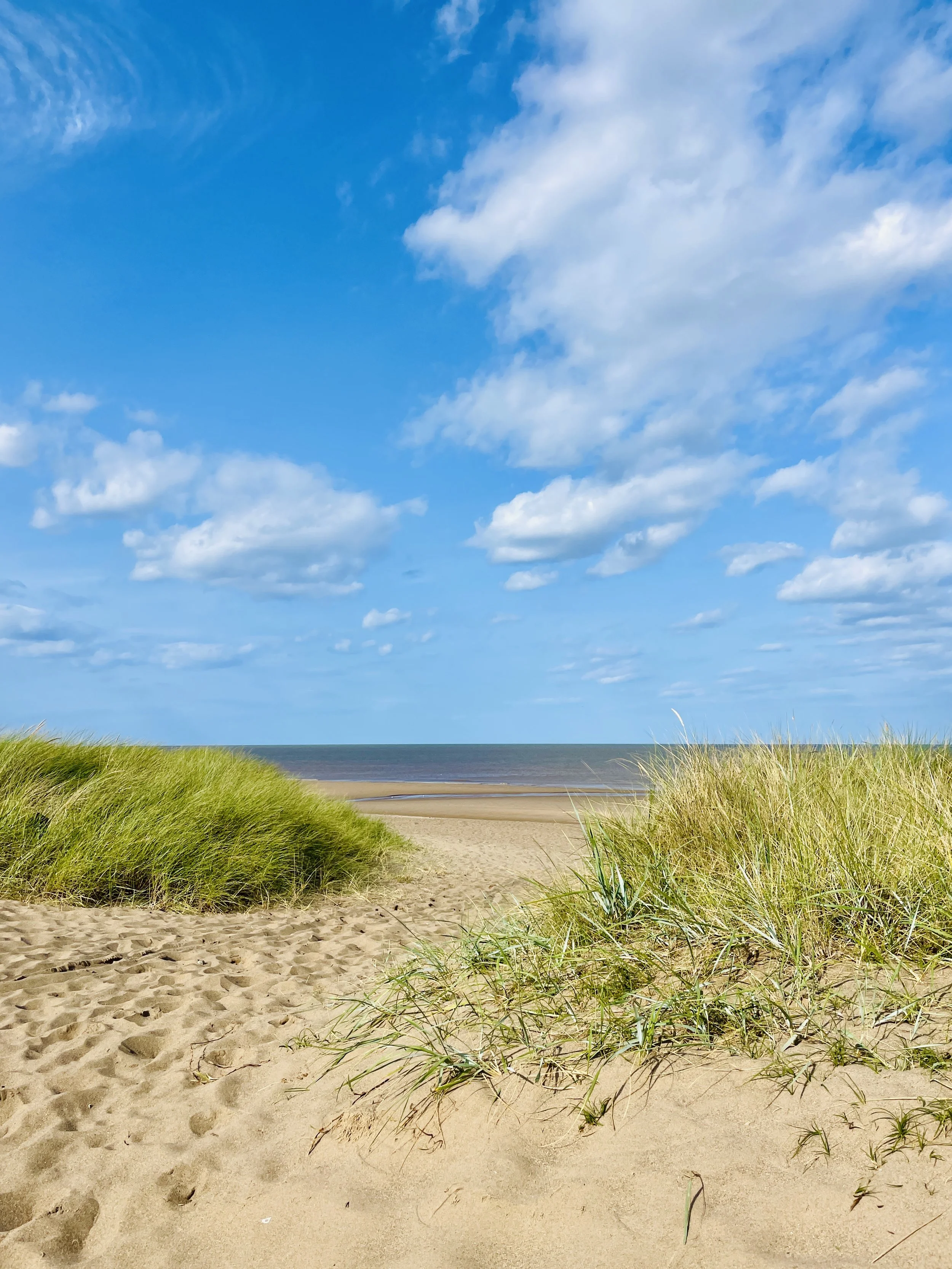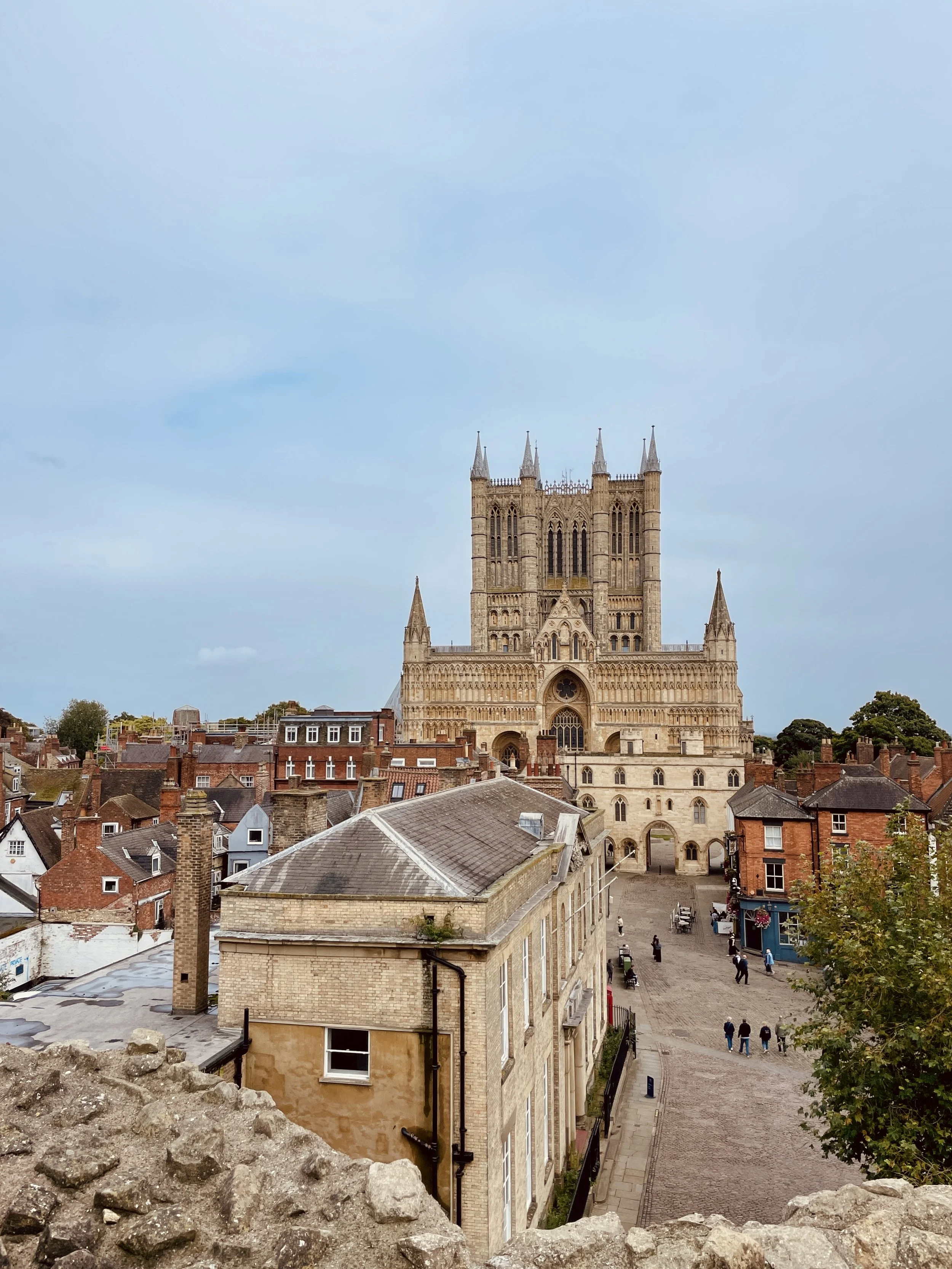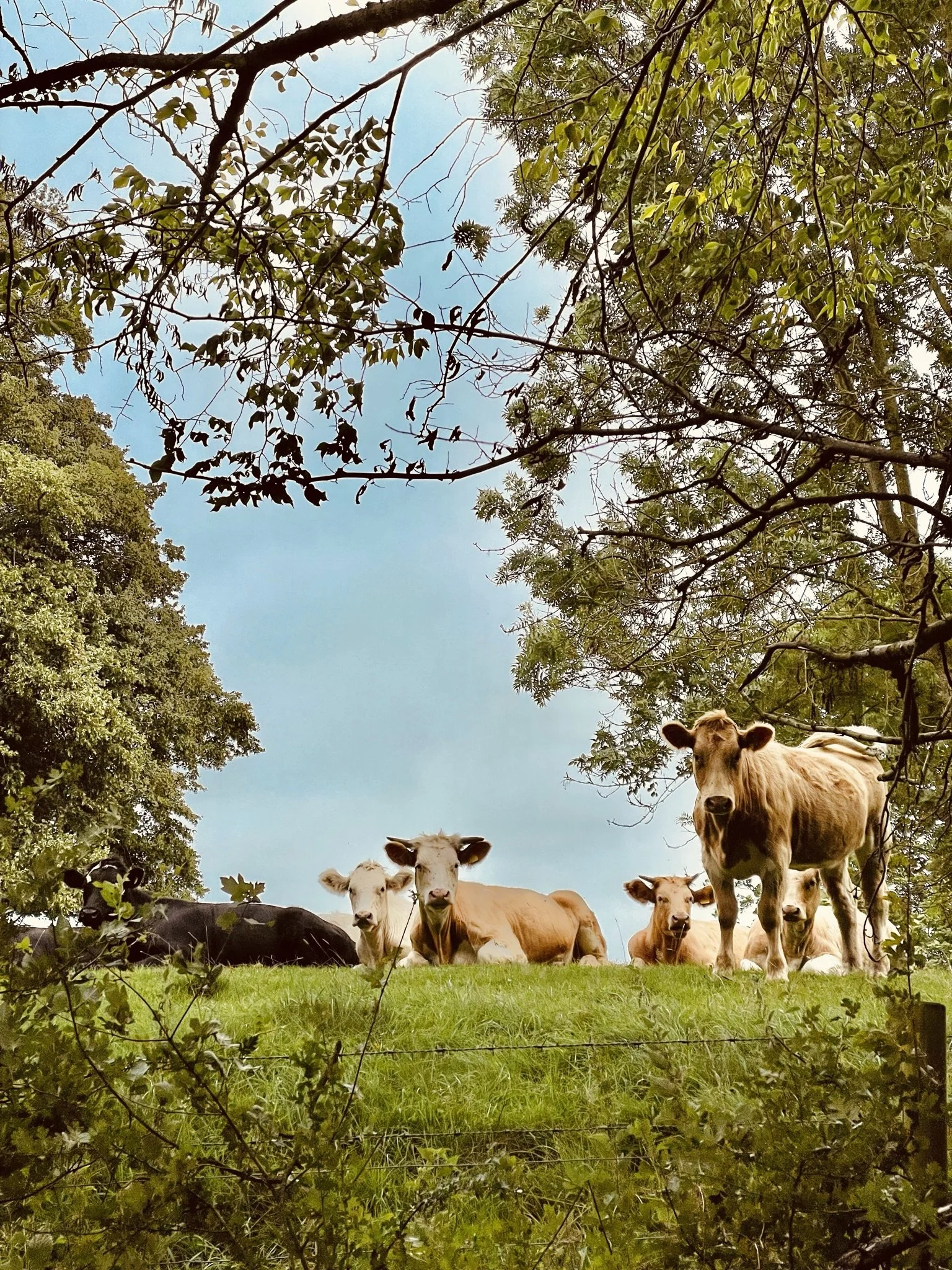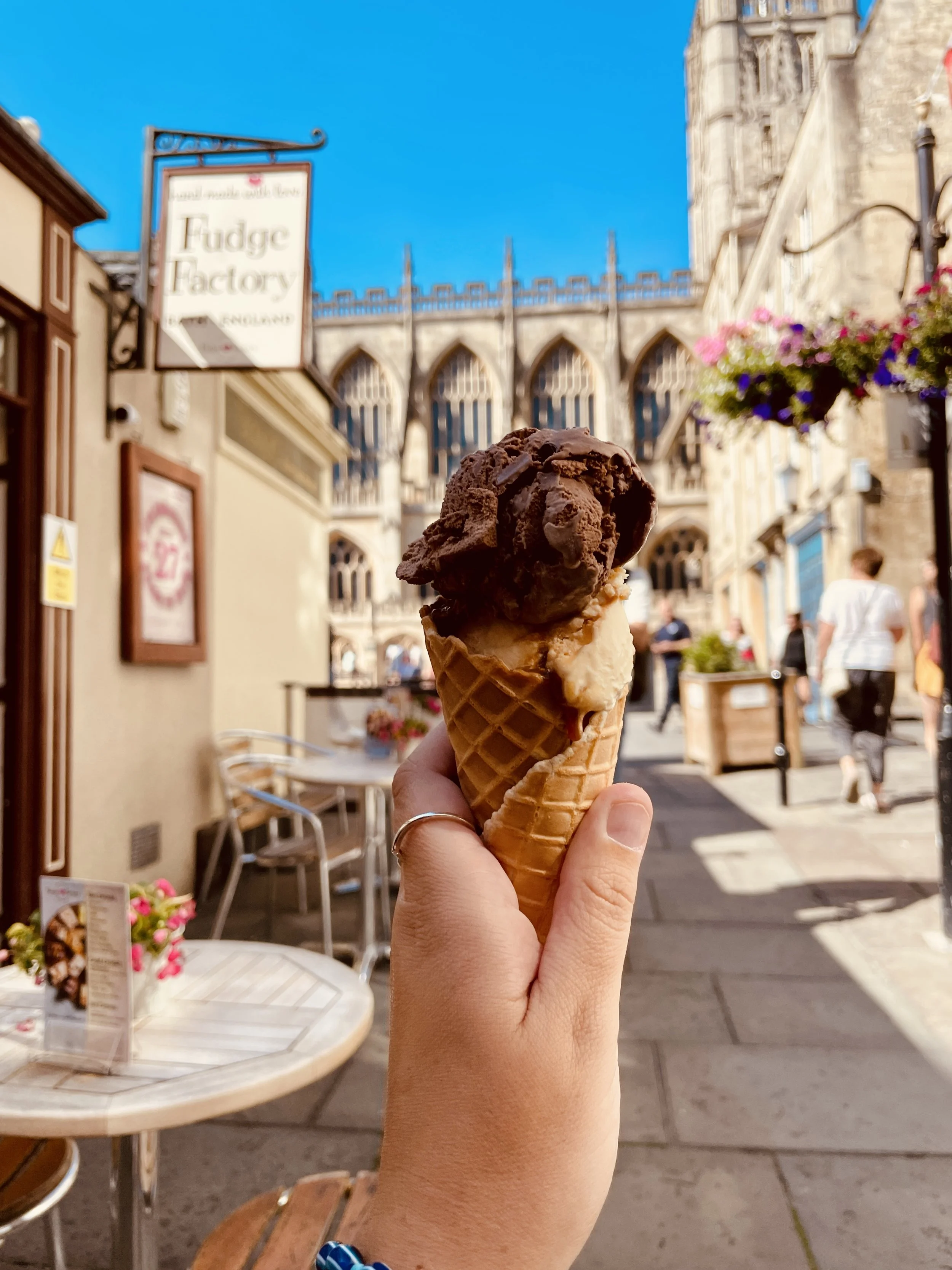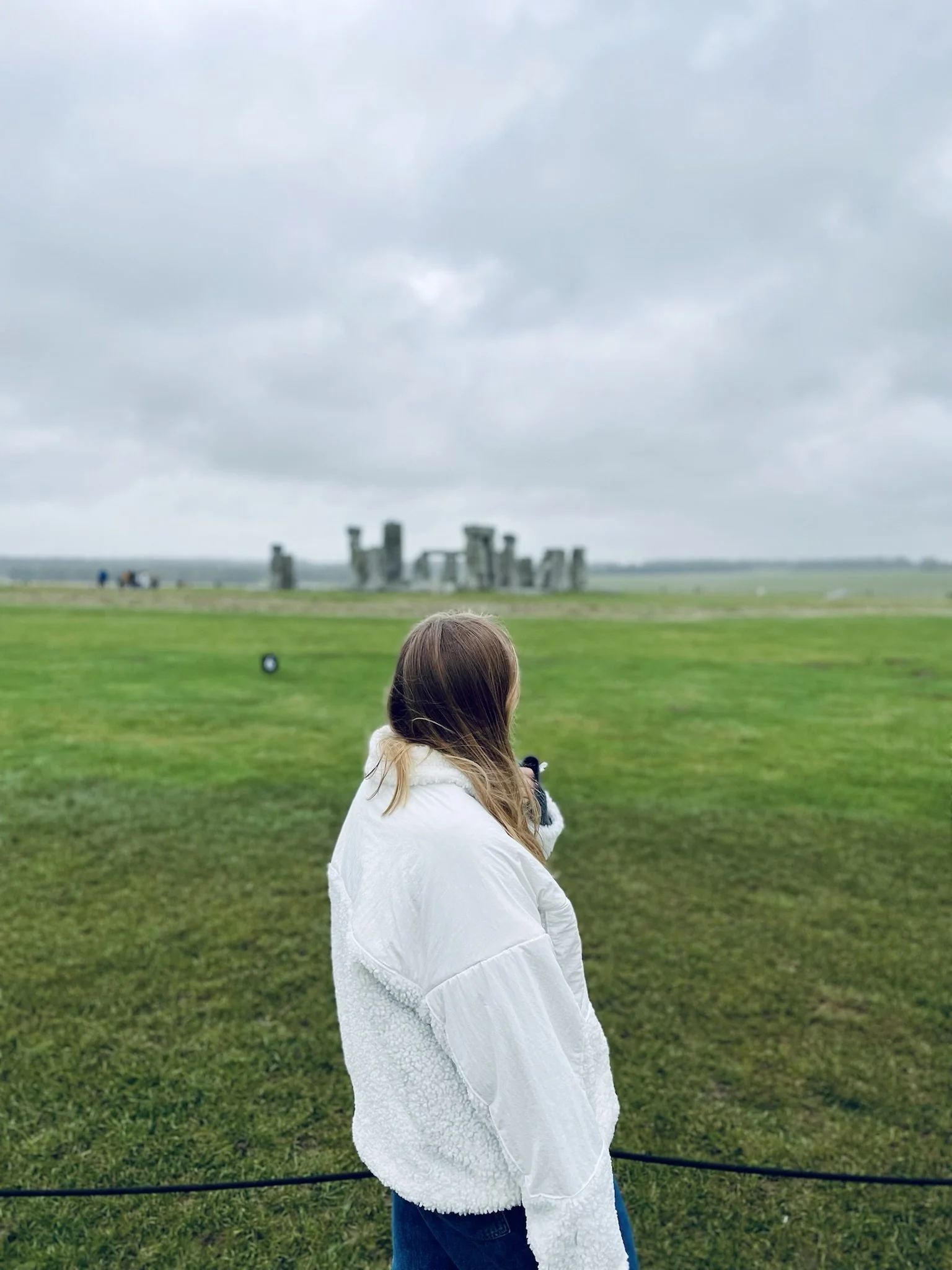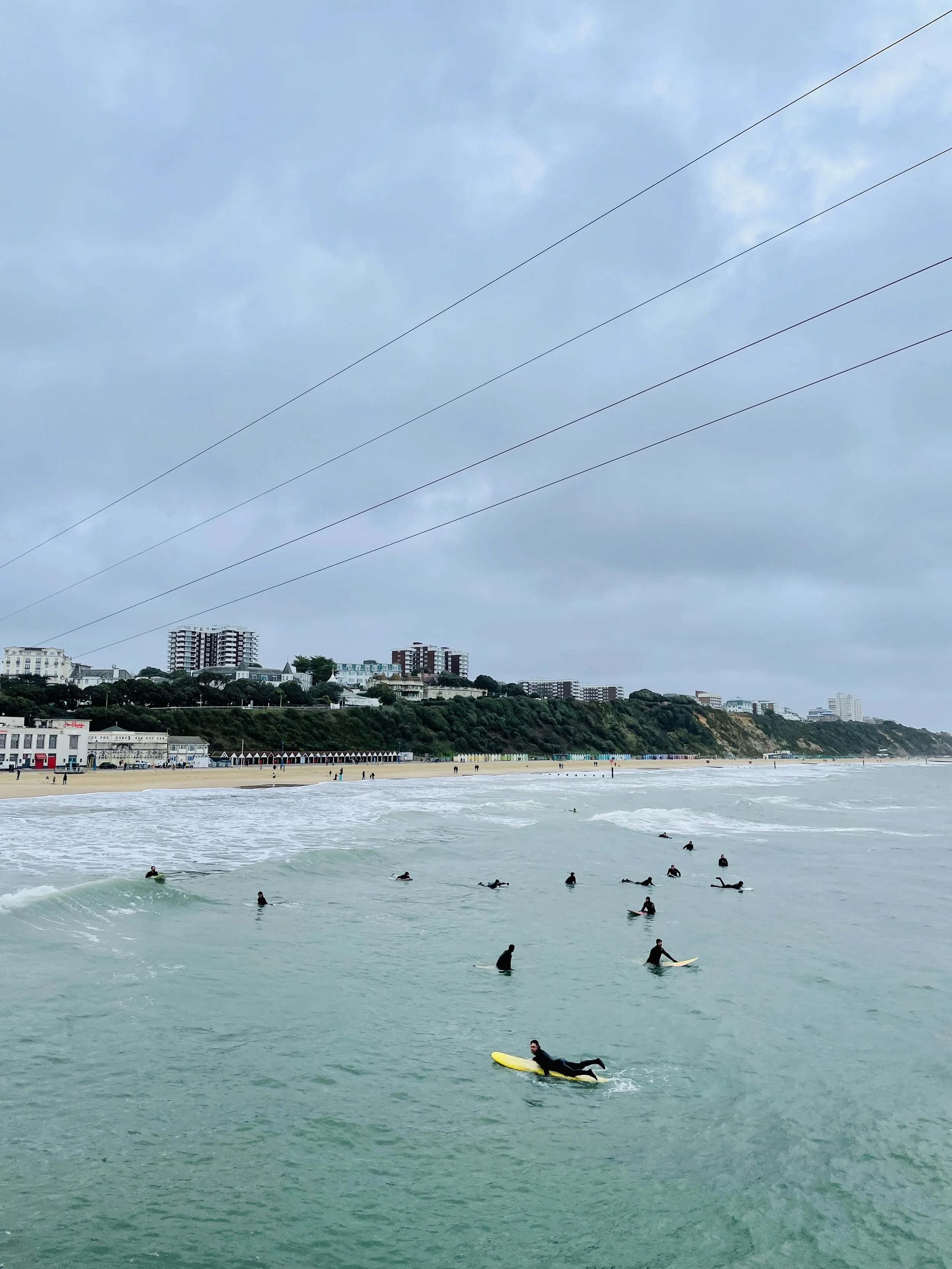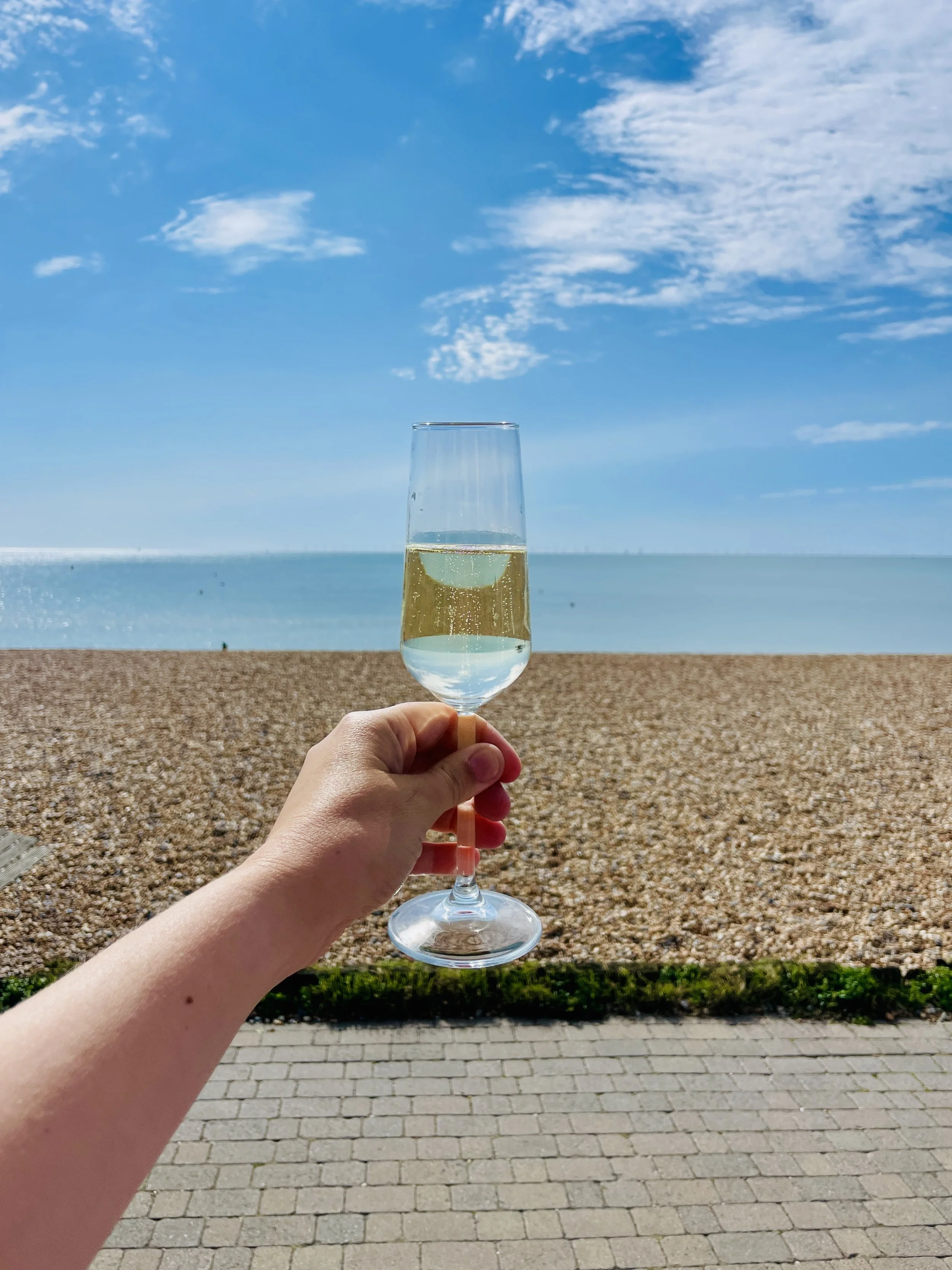Two Weeks in England Road Trip Itinerary
Two Weeks in England Road Trip Itinerary
words: Sophie Alexander-Osman
photography: Sophie Alexander-Osman
published: July 22, 2025

If you want to see England beyond its big cities, this two‑week road trip takes you on a complete circular route starting and ending in London. Travelling by car gives you the freedom to reach places that trains don’t always serve directly, from the university charm of Cambridge and the quiet coast of Skegness to the rolling hills of the Peak District and the dramatic landscapes of Snowdonia National Park. The route continues through the historic streets of Bath, down to the south coast at Bournemouth with a stop at Stonehenge, before following the shoreline to Brighton and back to London. It’s a varied journey that shows you England’s countryside, coast and culture in one trip.
This circular England road trip covers about 800 miles with roughly 18 hours of driving in total.
Route on Google Maps
London to Cambridge
Starting in London, head north towards Cambridge, which is about a 1 hour 30 minute drive via the M11. Cambridge is best known for its historic university buildings and beautiful riverside setting, and Punting along the River Cam is a must‑do. You can rent a punt yourself or join a guided tour to learn about the colleges that line the water. Spend time walking through the cobbled streets, visiting King’s College Chapel and enjoying the green spaces along The Backs. Parking is easiest at one of the park‑and‑ride sites around the edge of the city. Cambridge is compact and easy to explore on foot once you are there, so you can take your time soaking it all in before setting off again.
Punting in Cambridge
Punting in Cambridge
Cambridge to Lincoln via Skegness
From Cambridge, take the A14 and then A17 to reach Skegness in Lincolnshire, which takes around two hours. Skegness is a traditional English seaside town with long sandy beaches and plenty of classic coastal charm. The surrounding beaches, including Chapel St Leonards and Gibraltar Point, are worth exploring for quieter spots. From here it is just over an hour’s drive inland on the A158 to reach Lincoln, making it a good stop on your way towards the Peak District. Lincoln’s cathedral is one of the finest examples of Gothic architecture in England and dominates the city skyline. Spend time walking up Steep Hill, browsing the independent shops and enjoying the view from the castle walls.
Chapel Point in Lincolnshire
Lincoln Cathedral
Lincoln to the Peak District
Leaving Lincoln, follow the A46 and A617 towards the Peak District, a drive of around two hours. This area is known for its rolling hills, stone villages and countless walking trails. Matlock and the famous stepping stones at Dovedale are highlights, and there are routes for all abilities, from gentle riverside walks to more challenging hikes. Bakewell is another great stop, known for its puddings and traditional market town atmosphere. Driving through the national park gives you plenty of opportunities to stop and explore villages such as Castleton and Hathersage. The Peak District is also ideal for photography, with scenic views around almost every bend in the road.
Peak District
Peak District
The Peak District to Snowdonia
From the Peak District, take the A50 and A5 west into Wales to reach Snowdonia National Park, which is about three hours by car. Snowdonia is known for its dramatic mountains and is home to Snowdon, the highest peak in Wales. Climbing Snowdon is achievable for most with the main routes, or you can take the mountain railway if you prefer a gentler experience. After your hike, head to one of the nearby Welsh beaches such as Barmouth or Harlech to relax. The contrast between rugged mountains and sandy shores makes this area unique. Small villages like Betws‑y‑Coed are also worth a visit for a meal or a coffee. The drive itself through North Wales is scenic, with plenty of places to stop.
Snowdonia National Park, Wales
Snowdonia National Park, Wales
Snowdonia to Bath via The Cotswolds
Leaving Snowdonia, drive south on the A5 and M4 to Bath, a journey of around four and a half hours. On the way, you can also stop off in The Cotswolds, which makes a lovely extra stop with its stone villages and rolling countryside. Bath is a city steeped in history, known for its Georgian architecture and the ancient Roman Baths. Take time to explore the Bath Abbey, the Royal Crescent and Pulteney Bridge. The Roman Baths themselves are fascinating, giving you a look at how the city once functioned as a spa town. Bath is also compact, so walking is the best way to see the sights. There are plenty of cafés and restaurants to enjoy, as well as local shops selling artisan goods.
Fudge Factory, Bath
Pulteney Bridge, Bath
Bath to Bournemouth via Stonehenge
On your way from Bath to Bournemouth, take the A36 and A338, which takes just over two hours. Along the way, a stop at Stonehenge is well worth your time, as it sits just off the A303 and is easy to access from the main route. Bournemouth itself offers wide sandy beaches and a lively seafront with gardens leading down to the pier. Try classic fish and chips on the promenade, or if you’re feeling adventurous, join a surfing lesson. A short drive to Sandbanks and Poole Harbour adds another layer to your visit, with upmarket beachfront spots and views over the water. The south coast drive is straightforward and gives you a good mix of coast and countryside. Bournemouth also has a good range of accommodation, making it an easy place to stop for the night.
Stonehenge
Surfing in Bournemouth
Bournemouth to Brighton
From Bournemouth, follow the A27 and A23 east along the coast to Brighton, a drive of around two hours. Brighton is lively and full of character, known for its pebble beach, pier and independent shops in The Lanes. Walk along the seafront, enjoy the Royal Pavilion and explore the creative street art scattered around the city. There are plenty of restaurants and cafés, offering everything from classic seaside fare to international cuisine. Brighton also has a strong arts scene, with galleries and live music venues to discover. Parking can be tricky, so use one of the main car parks or stay somewhere with dedicated parking. It’s a vibrant final stop before heading back to London.
From Brighton, it’s a straightforward two‑hour drive back to London via the M23 and M25. There are also many direct trains a day between Brighton and London if you prefer to return by rail.
Brighton
Brighton
Summary
You can easily spend one or two nights in each place, giving you enough time to take in the history, culture and natural beauty the UK has to offer. This route passes through university towns, coastal beaches, rolling hills and mountain landscapes which are some of the most picturesque parts of the country. Each stop has its own character and stories, so you get a real mix of what England and Wales have to offer. The pace is relaxed, so you won’t feel rushed trying to see everything. Overall, it’s a road trip that takes you full circle and lets you experience a varied side of the UK.
RELATED POSTS

